
2026 marks the 40th anniversary of the establishment of a sister city relationship between Shanghai and Hamburg. Supported by the Shanghai Municipal Culture and Tourism Bureau and co-organized by the Shanghai Association for International Cultural Exchange and the Hamburg Pashmin Art Consortia, the "From the Huangpu River to the Elbe River - A Symphony Exhibition of Chinese and German Artists" held its opening ceremony on September 20 at the Pashmin Art Consortia Art Center in Hamburg, Germany.

Exhibition site
Shanghai and Hamburg established a sister city relationship in 1986. In 2019, they signed a memorandum of understanding for the 2019-2020 sister city partnership. Shanghai and Hamburg, with highly similar economies, cultures, and port cities, play a pivotal role in Sino-German cooperation.
"Although Shanghai and Hamburg are located at the two ends of the Eurasian continent, they have a deep bond that spans mountains and seas. As world-class port cities, they prosper because of water and live by the sea. They not only carry the historical context of their respective countries, but also nurture an open and inclusive urban character." Yang Yan, a representative of the Shanghai International Cultural Exchange Association, one of the organizers, said that this exhibition is a vivid dialogue between the spiritual characteristics of the two cities. It not only has the agility and elegance of Shanghai's Shanghai culture, showing the cultural heritage of an oriental city; but also the vibrant bloom of Hamburg's diverse art, showing the unique charm of a western port city.

(Top) Yang Yan, representative of the Shanghai Association for International Cultural Exchange; Jin Songbao, Acting Consul General of China in Hamburg; Parvati Vasanta, Head of Asian Affairs, International Cooperation Department, Hamburg City Council Office; (Bottom) Lu Wugang, former Consul General of Germany in Chengdu; Li Lei, representative of the artists; Nova Nouri, President of the Pasmin Art Union
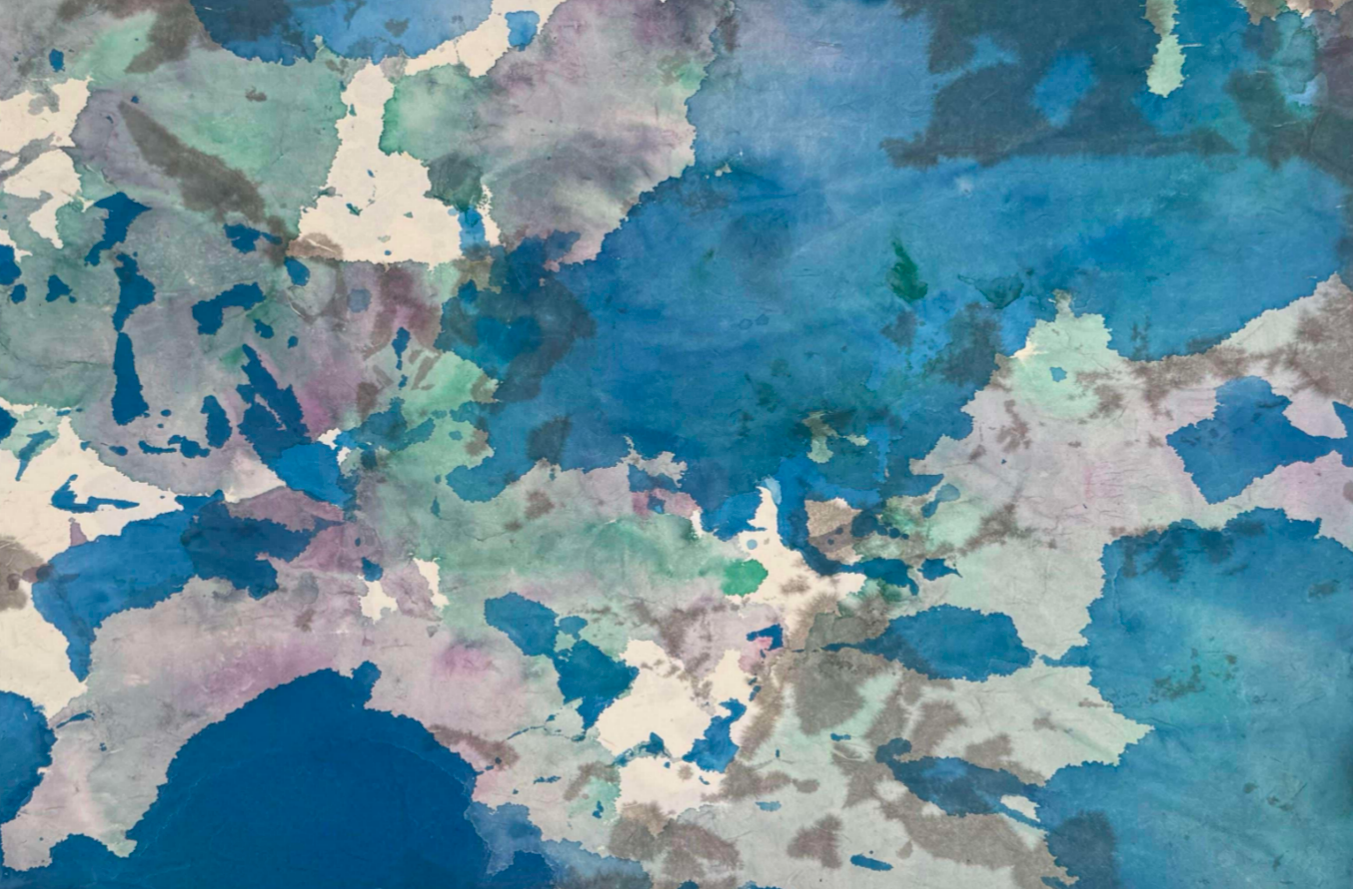
Works by Li Lei
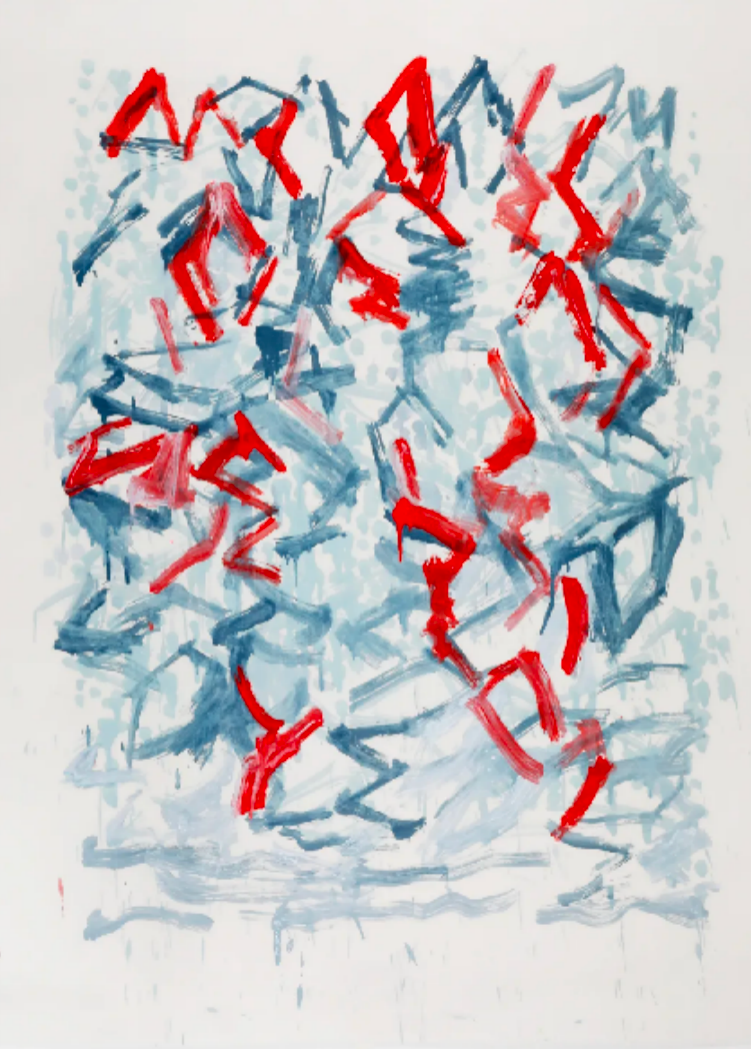
Lu Lan's works
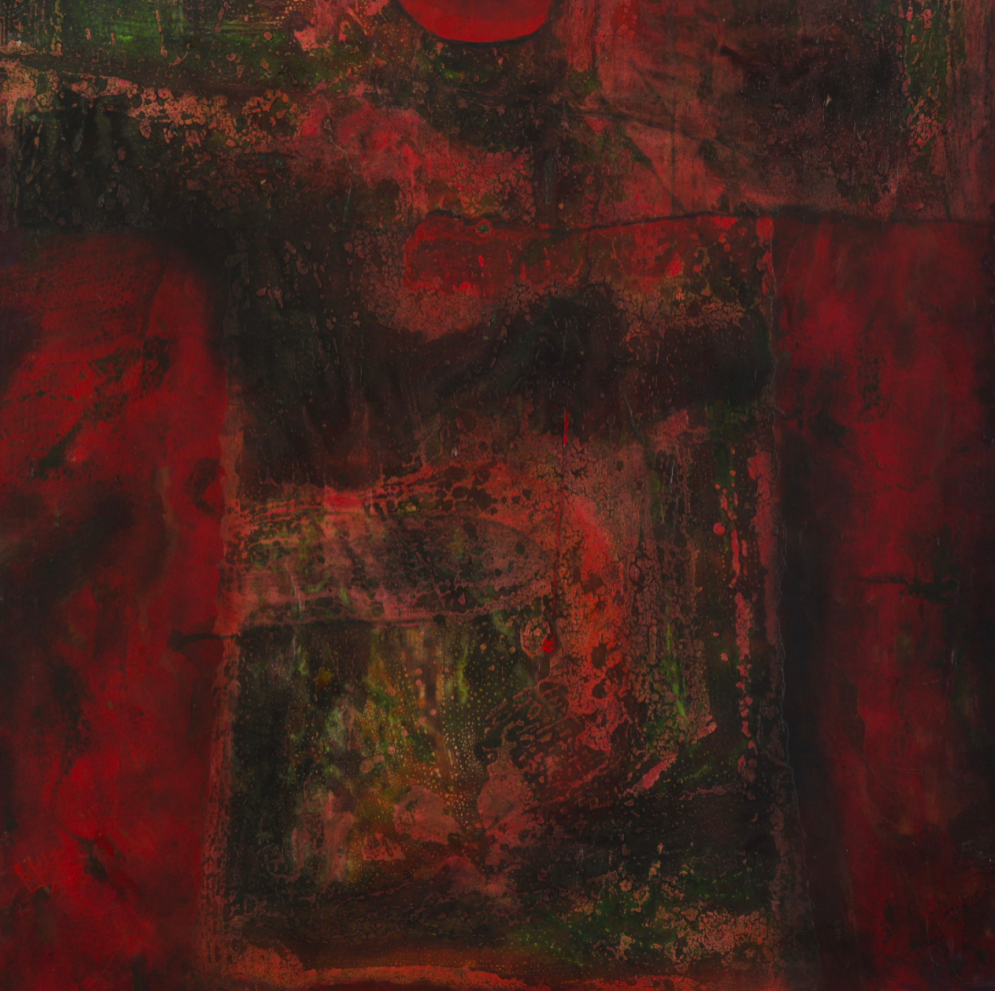
Jiang Haicang's works
It is reported that the Chinese artists participating in the exhibition include Li Lei, Lu Lan, and Jiang Haicang, and the German artists include Natalja Nouri, Michael Knepper, and Lionel Mach.
Jin Songbao, Acting Consul General of China in Hamburg, said at the event: "The Huangpu River carries China's cultural vitality, and the Elbe River carries Germany's artistic heritage. In this exhibition, artists from both countries use their brushes as language and color as a bridge to integrate their respective cultural reflections and contemporary insights into their works. This not only showcases the unique charm of Chinese and German art, but also builds a bond of spiritual connection."
Li Lei, born in Shanghai in 1965, currently serves as a professor in the Stage Design Department of the Shanghai Theatre Academy and director of the Shanghai Haipai Art Museum. He has long been dedicated to the creation and research of Chinese abstract art, attempting to integrate Chinese cultural concepts with international abstract language, forging a new path for Chinese abstract art. Lu Lan, born in Shanghai in 1966, has spent many years in the United States. In recent years, her vibrant, fluid acrylic works depict the connection between nature and life, embodying a fusion of Eastern and Western aesthetics. Jiang Haicang, born in Qishan, Shaanxi, draws on the rich historical heritage of Zhouyuan culture to imbue his art with a primordial aura, resulting in a unique, profound, and abstract aesthetic.
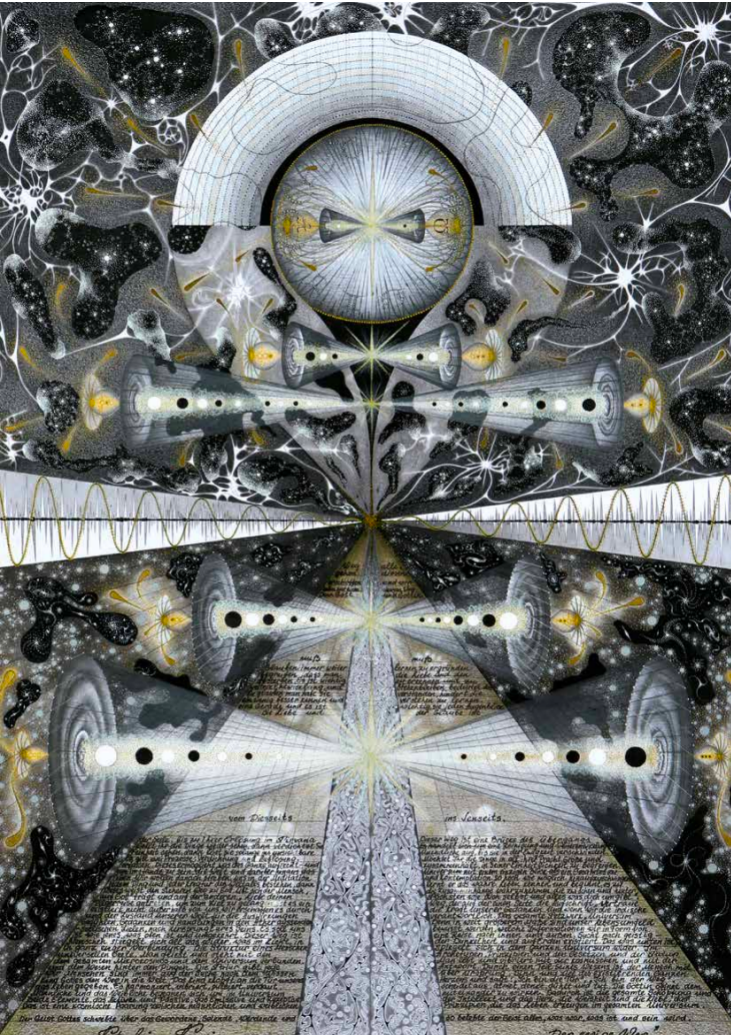
Works by Natalia Nouri

Works by Michael Knepper
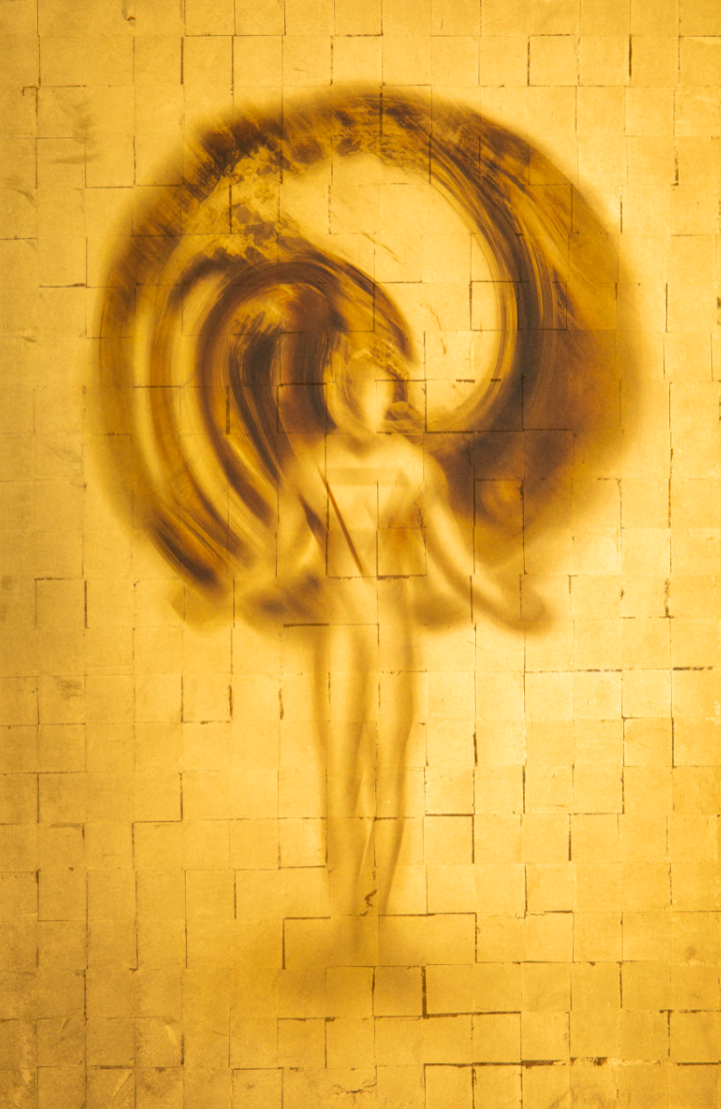
Works by Lionel Makris
Three German artists, through different approaches, have expanded the expressive dimensions of contemporary art. Noori's delicate and philosophical paintings construct a universe where the micro and macro interact. In her paintings, microorganisms appear as magnificent as galaxies, revealing the intrinsic connection between life and nature and inviting viewers to contemplate the essence of existence. After creating commercial art for international brands, Knepper turned to personal artistic expression, integrating diverse techniques to create works ranging from figurative portraits to abstract compositions. German media have described his art as "vivid photorealism." Makris is dedicated to blurring the boundaries between reality and fiction. He employs a unique technique, treating the surface of his works with 24K gold leaf. Through unique photographic processing and post-processing, he imparts a unique texture to the images.
"When my brush touched this theme, I was always thinking about how to use artistic language to convey the resonance between the two cultures. In this exhibition, every artist poured their heart and soul into it - we not only showcased the profound artistic conception of Chinese ink painting, but also borrowed from the rational expression of German art. In this collision, we gained a lot of inspiration." Li Lei said in an interview that the German painter Käthe Kollwitz had a great influence on him. "When I was learning to paint, I was moved by the humanistic spirit and deep sympathy for the masses in Käthe Kollwitz's works. I was also impressed by the extremely sharp lines and powerful shapes. German Neo-Expressionism is relatively strong in Western contemporary art and has influenced Chinese art. Conversely, through learning from and absorbing these works, I ultimately expressed the spiritual outlook and aesthetic values of the Chinese people."
Nour Nouri, founder of the Hamburg Pasmin Art Association, is delighted to lead this artistic dialogue. "During the preparations, we witnessed the ingenious dialogue between artists from both countries – the verve of Chinese artists, the weight of German artists' depictions. Each work is a microcosm of the resonance between civilizations."
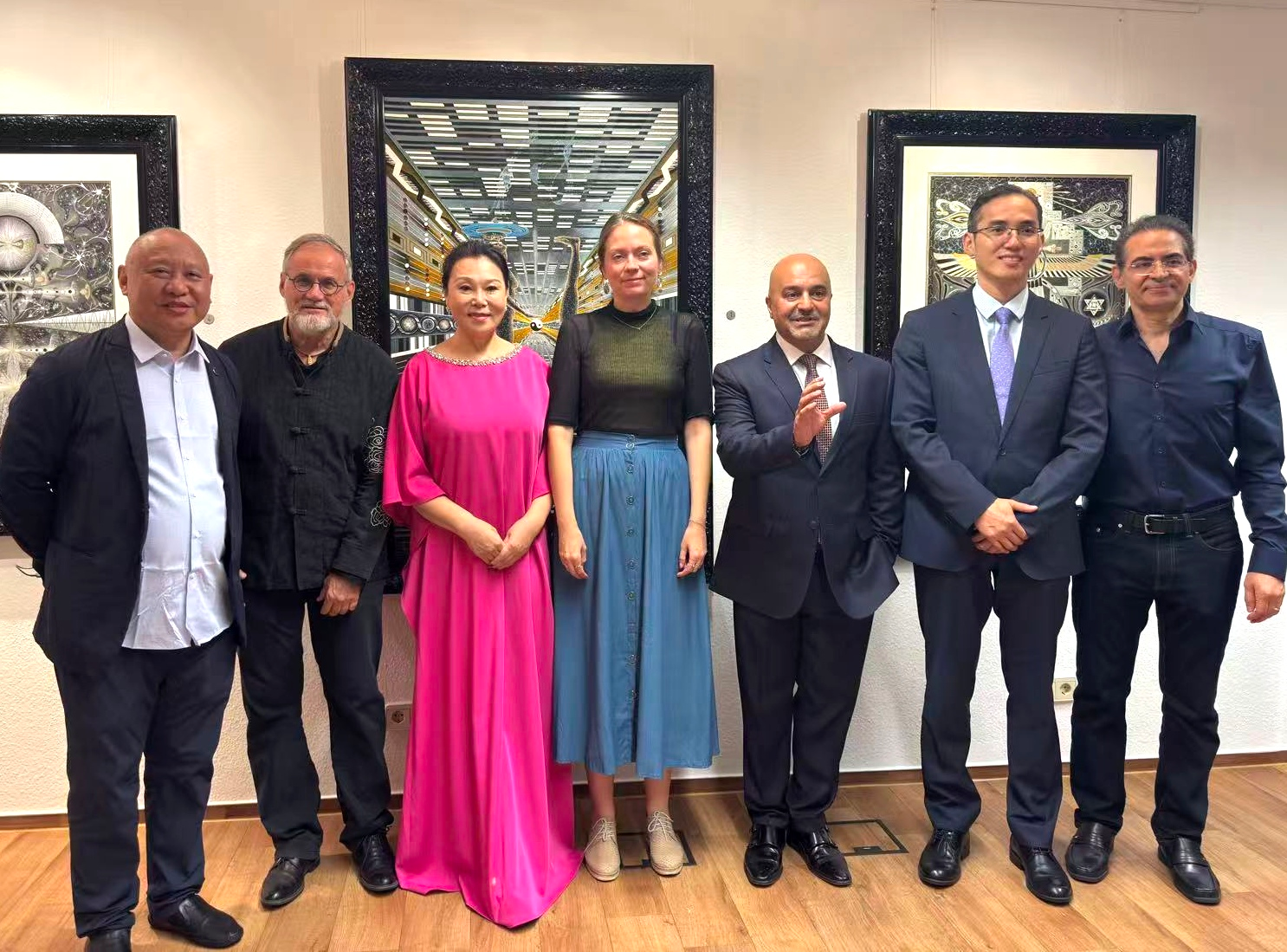
Group photo of guests
It is reported that more than 300 people from all walks of life in Germany attended the opening ceremony. The exhibition is co-organized by Shanghai Theatre Academy and will last until October 3.

